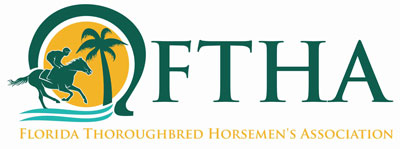The “GOTCHA” Syndrome, Alive and Well
January 14, 2010
By Kent H. Stirling, FHBPA Executive Director
One of the inevitable things about drug and medication testing is that the sensitivity always increases. Thirty years ago, the initial screening of samples was done by Thin Layer Chromatography (TLC), and medication detections below 1 part per million or one microgram/ml were unusual. Then, in the late 1980’s and early 1990’s, Enzyme-Linked ImmunoSorbent Assay, ELISA, testing came online, and suddenly labs were screening samples and detecting positives down to the low parts per billion or nanogram concentrations. This new ELISA testing produced a dramatically increased number of positives, at least until the medication rules and use of therapeutic medications were adjusted to the new testing technology.
In the last several years, with the advent of a new technology called, Liquid Chromatography-Mass Spectrometry-Mass Spectrometry, (LC-MS-MS), testing is again increasing in sensitivity, this time by another thousandfold above that of ELISA testing. This means that chemists can now readily screen and confirm detections at one thousandth of a nanogram known as picograms which are one part per trillion or as we have, previously mentioned, the equivalent of one second of your life if you were 32 thousand years old.
This greatly increased sensitivity now allows chemists to detect corticosteroids such as triamcinolone (Vetalog) and others, administered in relatively small doses for several days, perhaps even up to a week after the last administration. Similarly, in the last year or so testing for substances such as glycopyrollate (Robinul), dexamethasone (Azium) and ipratropium bromide (Atrovent) have been done with new testing capabilities. We are now seeing increased reports of identifications of low concentrations of these substances in plasma and urine samples.
New and more sensitive detections of glycopyrollates have been recently reported in Florida and Kentucky, and relatively low concentrations of triamcinolone identifications have also been recently reported in Kentucky. Additionally there are new reports of possible ipratropium identifications in Kentucky and low concentration identifications of dexamethasone in Oklahoma.
In Canada for years the authorities there have announced to horsemen the impending deployment of new or more sensitive tests for legitimate therapeutic medications. The Canadians emphasize that their approach to medication extends from the laboratory to the backside. In the United States, unfortunately, our approach in some states has extended from the laboratory straight to the stewards (for punishment). Certainly this has been the case in the medications cited above particularly in the wonderful world of zero tolerance.
The Canadians feel that their approach eliminates the need of calling needless positives that will always accompany the introduction of a new more sensitive test for a legitimate therapeutic medication. The Canadian approach made testing for therapeutics less expensive and allowed them to focus resources on the detection of illegal medications and drugs.
The American approach, at least in some states, has been to take advantage of zero tolerance and focus on therapeutic medications and the hell with looking for the alleged use of “rocket fuel”, which unfortunately most members of the media think is any therapeutic medication overage detected.
Horsemen and their veterinarians need to be alert to the fact that we are now going through another high-tech instrument driven cycle of increased drug testing sensitivity. Horsemen and their veterinarians should watch carefully for any reports of new high sensitivity identifications and positives at significantly lower concentrations/higher testing sensitivity then has previously been the case, and insure that everyone that needs to be made aware of these new tests are informed.
Again it seems that the Canadian common sense approach of handling new testing technology for therapeutic medications never made it south of the Border, at least in a number of instances. What was and is being used in those states is the good old fashioned “Gotcha!” approach to regulation.
954.457.3516 | info@floridahorsemen.org



